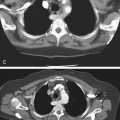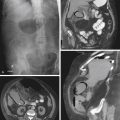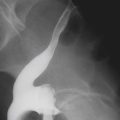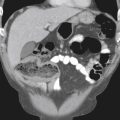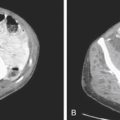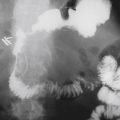CASE 114
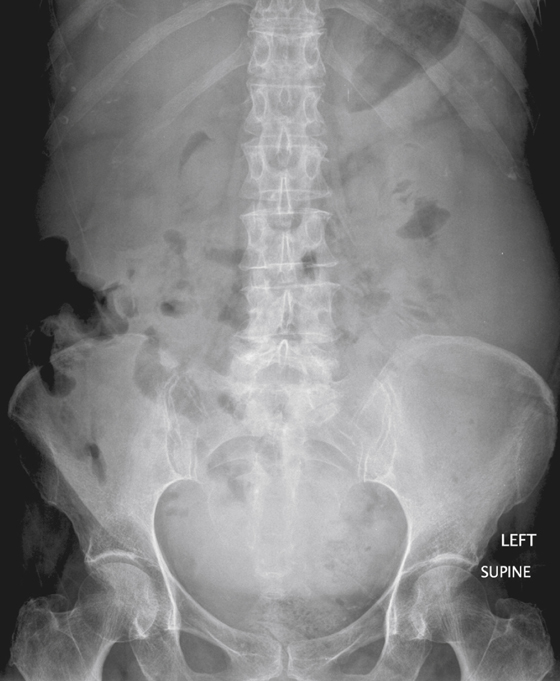
History: A 39-year-old woman collapses after complaining of acute abdominal pain and distention.
1. What should be included in the differential diagnosis of the imaging finding shown in the figure? (Choose all that apply.)
2. This patient with hemoperitoneum had a positive pregnancy test. What is the diagnosis?
3. What solid organ is most commonly injured by blunt abdominal trauma leading to hemoperitoneum?
4. Disease of a retroperitoneal structure does not usually cause free peritoneal fluid. Which of the following diseases of a retroperitoneal viscus frequently produces free peritoneal fluid?
ANSWERS
CASE 114
Hemoperitoneum
1. A, C, D, and E
2. D
3. C
4. A
References
Gore RM, Gore MD. Ascites and peritoneal fluid collections. In: Gore RM, Levine MS, eds. Textbook of Gastrointestinal Radiology. 2nd ed. Philadelphia: Saunders; 2000:1969–1979.
Cross-Reference
Gastrointestinal Imaging: THE REQUISITES, 3rd ed, p 132.
Comment
The radiograph shows evidence of free fluid within the abdominal cavity (see figure). Findings include increased density in the pelvis and fluid density in the paracolic gutters between the descending colon and the flank stripe. Fluid within the peritoneal cavity can represent ascites, inflammation, blood, urine, or bile. The appropriate history should be obtained in this situation. Ascites can be the result of various causes and is the most common cause of long-standing fluid accumulation in the abdomen. In the setting of severe symptoms or trauma, all diagnostic possibilities must be considered.
Hemoperitoneum is the most likely cause. In patients who have sustained blunt trauma, the fluid could be the result of laceration of the spleen or the liver. Laceration of bowel or mesentery is less common. Other acute but nontraumatic causes include a ruptured ectopic pregnancy and ruptured blood vessel. A perforated viscus caused by ulceration, inflammation, or trauma usually produces ascitic fluid with little hemorrhage. Urine is another consideration in the setting of trauma, but the only cause is rupture of the bladder. Injury to a retroperitoneal structure almost never causes intraperitoneal bleeding unless it is penetrating. Pancreatitis is the only condition that affects a retroperitoneal structure that produces free intraperitoneal fluid, and this finding occurs only in the setting of acute pancreatitis.

